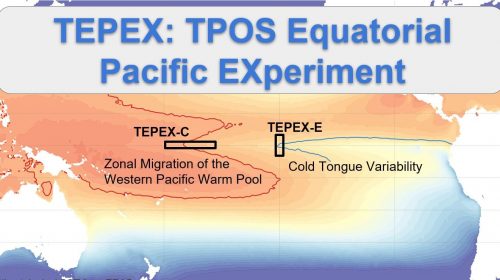Since humans began emitting large amounts of carbon dioxide (CO2) into the atmosphere at the start of the Industrial Revolution in 1750, scientists estimate that the ocean has absorbed 20 to 30 percent of these emissions. This is good news for reducing atmospheric CO2, the primary cause of modern climate warming, but the resulting chemical changes in ocean water are increasing acidity and restricting the lives of marine organisms. If humans continue to emit CO2 at high levels, preliminary model projections show a 100 to 150 percent increase in acidity from 2000 to 2100, jeopardizing marine ecosystems and the goods and services they provide to billions of people around the world. Accurate predictions of ocean acidity on regional and global scales are essential for informing critical research, mitigation, and adaptation strategies. A newly published study, supported by a collaboration between CPO’s Climate Observations and Monitoring (COM) Program, Climate Variability and Predictability (CVP) Program, and NOAA’s Global Ocean Monitoring and Observing (GOMO) Program, presents a new data product spanning 1750 to 2100 of marine chemical properties that indicate ocean acidification processes.
An international group of researchers used 14 different Earth System Models from the Coupled Model Intercomparison Project Phase 6 (CMIP6), along with three of the latest available observational datasets, to produce ocean acidification projections that have improved spatial and temporal resolution and overall data quantity compared to previous research. This study, received additional support from NOAA’s Ocean Acidification Program (OAP), National Centers for Environmental Information (NCEI), Cooperative Institutes, and laboratories, is published in the Journal of Advances in Modeling Earth Systems, and the data product is available for the research community to access for future research. The COM-CVP-GOMO collaboration funded scientist Brendan R. Carter, contributor to this project, as part of an initiative to increase the use and value of ocean observations, advance our understanding of climate variability and change, and enhance NOAA’s ability to model and predict the Earth System.








